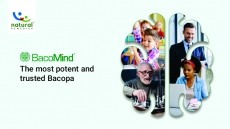Special edition: Antioxidants
Differentiation holds the key to antioxidant success: Expert

Antioxidants are big business. The number of products with ‘antioxidants inside’ style labels is mushrooming, according to Mintel’s Global New Products Database (GNPD). In 2009, there were 409 launches globally with ‘antioxidants’ flagged on the labels, compared with 154 in 2005 and 299 in 2007 – and that is just in marquee supplement formats such as vitamin A, C E, selenium, CoQ10, and zinc.
The overall market for antioxidants was valued at a whopping $12bn (€8.8bn) in 2009, according to Euromonitor International. So what do scientists working in this field make of it all?
“The issue that I have is that we’re talking about thousands of different compounds with wildly different chemical structures, but they’re covered by one term. And that term implies one mechanism of action,” says Professor Jeffrey Blumberg, director of the Antioxidants Research Laboratory at the Jean Mayer USDA Human Nutrition Research Center on Aging.
“It’s simplification that could get us into trouble.”
From scientific term to marketing tool
Definitions are important, and an antioxidant, strictly speaking, is a “substance (as beta-carotene or vitamin C) that inhibits oxidation or reactions promoted by oxygen, peroxides, or free radicals”, says the Merriam-Webster dictionary (which admitted the term in 1926).
And with this definition in mind, Prof Blumberg asks what would happen when a consumer hears that an antioxidant does not actually have an antioxidant effect in vivo. What if the effects were actually a change in phase 2 metabolism, or anti-inflammatory, or an apoptosis effect?
“In my more jaded moments, I think this [over-use of the term] may all end with consumer burnout,” he says. “One of the problems with antioxidants is that there is no differentiation, and this clearly isn’t working.”
Putting the assays to the test
The use of the term antioxidant continues to grow, however, and attempts by marketers to up their claims are drawing on results from tests of ‘antioxidant activity’. Products are beginning to emphasise ORAC values on labels.
The issue of antioxidant assays is controversial – some people emphasise the importance of a measure, while other say such results should be taken with the proverbial pinch of salt.
To rely on assays that measure ‘total antioxidant capacity’ is problematic, said Prof Blumberg. To rely on one test above all others, as some appear to be doing with ORAC, suggests that there is one simple over-arching way of characterising these molecules.
“That’s not fair,” said Prof Blumberg. “It’s misleading marketing.”
A recent paper in the Nutrition Journal by Monica Carlsen et al. from the University of Oslo, for example, sought to establish the most comprehensive database of the antioxidant content of over 3,000 food products. The researchers chose to use the FRAP assay because they considered it simple, fast, and inexpensive.
In agreement with previous attempts to put foods in antioxidant league tables, the Carlsen study found that spices and herbs topped the list, followed by berries, fruits, nuts, and chocolate.
In an interesting caveat, Carlsen and her co-workers note that “it is not likely that all antioxidant-rich foods are good sources and that all antioxidants provided in the diet are bioactive", and also mention that the bioactivity of many of these antioxidants "are not necessarily correlated with their antioxidant capacity”.
Such limitations are not minor, said Prof Blumberg.
Referring to the Carlssen paper, Prof Blumberg expressed his approval that such a database had been compiled, but not for direct antioxidant measurements, but “because it gives us a better database on which to ask, ‘does this make any difference?’ when compared to health outcomes and so on”.
“We shouldn’t throw out ORAC, FRAP, and similar tests,” he said, “but these simple assays equate isocyanides, carotenoids, tocopherols, and stilbenes, for example, as somehow equivalent. It doesn’t tell us anything about bioavailability, antagonism, and synergies.”
“The limitations of these assays are likely to outweigh the advantages.”
So what do we do? How do we measure the effects of these compounds in vivo? “One direction to go is to get more complicated, to recognise the different compounds in different ways,” said Prof Blumberg. “We need to go back to the drawing board on this.”
But options are already out there, he said, pointing to the rise of the –omics: Metabolomics, proteomics, transcriptomics.
Looking to the future
Many questions remain in this area, and Prof Blumberg says that, as we continue to seek to understand why diets are helpful, and how foods can be formulated to provide these benefits, antioxidants will indeed be part of the solution. “But which antioxidant, in what form, and in what combination?” he asks.
A move away from calling anything and everything an antioxidant is also needed, as is moving away from defining them by a single assay.
“I’m not a lone voice, but I would like people to start thinking,” he said. “Stopping use of the term ‘antioxidant’ provides a terrific opportunity to differentiate yourself and promote the multifunctional benefits of these compounds we now call antioxidants.”
“Can we tell that story without using the term ’antioxidant’?”
The science, testing and regulation surrounding antioxidants will be discussed at the upcoming NutraIngredients Antioxidants 2010 Conference. For more information and to register, please click here.













